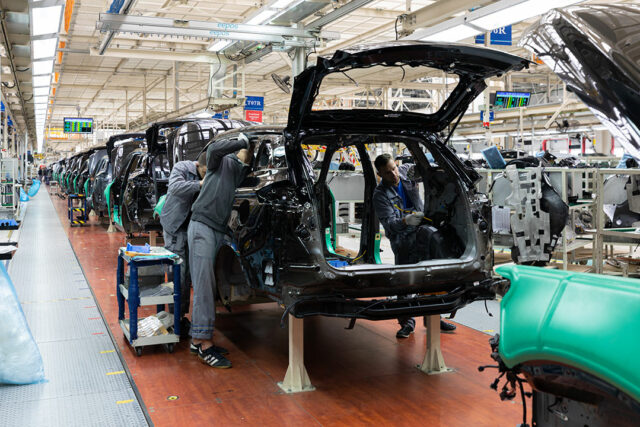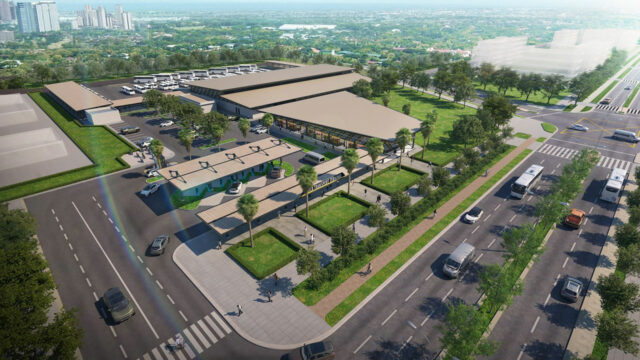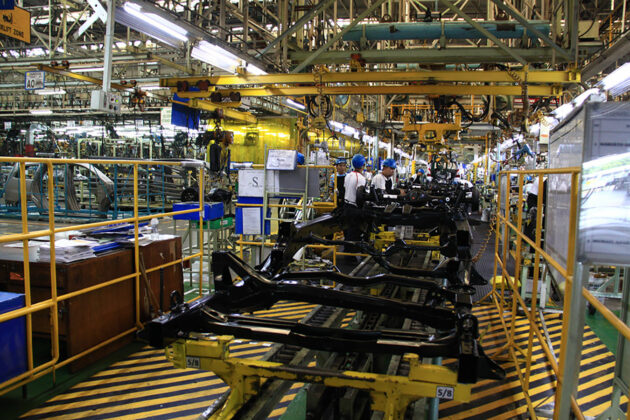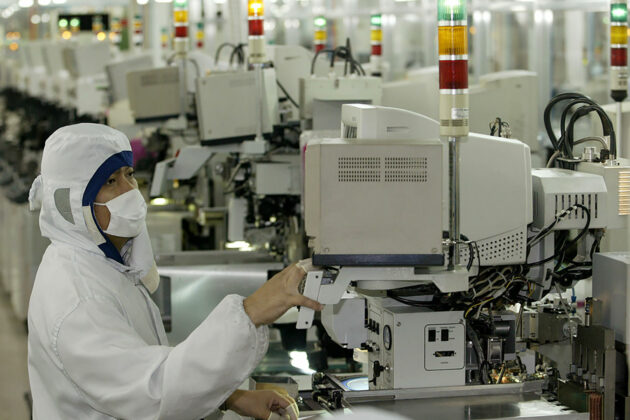Can Philippine manufacturing ever recover? Trains and automobiles
(Part 3)
Thanks to the predominance of food and beverage manufacturing in the domestic market, and the semiconductor and electronic components production in the export market, the Philippines is quite advanced in the Industrial Revolution (IR) 2.0., the stage at which more techniques went further than simple mechanization of work. During IR 2.0, programs were put in place to improve the quality of output and ensure better management of production. New techniques involved lean manufacturing principles, allocation of resources, just-in-time manufacturing strategies, and more advanced division of labor. Among the many innovative people who brought about these effective strategies and techniques was Frederick Taylor, an American mechanical engineer who studied labor patterns, enabling efficient workplaces and better optimization of the worker’s time.
IR 2.0 saw the introduction of many technological systems. With all the disadvantages of the inward-looking, import-substitution and ultra-nationalist industrialization that characterized our first attempt at industrialization in the 1950s to the 1970s, that stage at least introduced to our country the many technological systems that were developed during the second industrial revolution. The major feature of that era was the use of electric energy and steel in production industries. In fact, even in transport we saw the so-called tranvia using electricity in transport in the City of Manila.
In IR 2.0, the use of electricity made it possible for many industries to incorporate modern production lines and carry out mass production of goods. Also, this stage was characterized by extensive telegraph and railroad networks which greatly facilitated a faster transportation system. It also allowed faster communication and transfer of information.
In a way, we can say that Philippine transport system deteriorated when the trains going from Manila to Damortis, Pangasinan and to the Bicol region were abandoned. There are great expectations for our first subway system, that will be soon installed with the help of Japanese technology from Quezon City to the Manila International Airport. There is even greater expectation that soon we can emulate Indonesia, which already has a bullet train from Jakarta to Bandung, drastically cutting the time of travel. Recently, House Assistant Minority Leader Johnny Pimentel expressed the hope that Japan could be the logical fallback funding source for the Mindanao Railway Project (MRP) after the Philippine Government backed out from loan negotiations with China. The MRP will significantly decrease logistics costs in this resource-rich, second largest island of the archipelago that can play a key role in our food security programs.
In 1901, Ransom E. Olds established the very first assembly line. He produced Oldsmobile cars which his factory turned out at a rate of 20 units each day. In just one year, the company increased its volume by 500%. Thanks to the much bigger output, the overall pricing of automobiles decreased significantly, giving rise to the first mass market for cars. Then followed the stage of technological diffusion when Henry Ford adopted the system used by Ransom. It was Ford who was the first to bring about the idea of mass production which, strangely enough, he learned from the meat industry. He cultivated a keen interest in how pigs at a Chicago slaughterhouse would be hung on conveyor belts. There were several butchers and each would perform just part of the work of slaughtering the pigs. Henry then applied these principles in the production of automobiles by modifying how the process used to be carried out.
Before the invention introduced by Henry Ford, the entire automobile would be assembled in only one station. By applying the principles he learned from the conveyor belts and distribution of labor, he created a new system where all vehicles would be produced step by step, on a conveyor belt. This invention made the production of automobiles much faster and more cost effective. It is no wonder that Henry Ford is credited as the Father of automotive mass manufacturing.
To summarize, the differences between IR 1.0 and IR 2.0 are as follows: IR 1.0 depended on water and steam as the main power sources for machines and industrial processes while IR 2.0 used electricity and oil. In the employment of labor, IR 1.0 required more human resources for most industrial processes because there was more demand than supply which meant more people being employed and working for longer hours. IR 2.0 required less labor and more people lost their jobs. At least at the onset of IR 2.0, machines replaced workers, carrying out most of the activities that were formerly accomplished with manual labor. As economies progressed, however, the higher wages of those who were employed in the more productive manufacturing enterprises led to increased demand for other goods and especially services that absorbed the excess labor.
The next industrial revolution, IR 3.0 was spurred by advances in the electronics industry in the last few decades of the 20th century. This was the era revolving around the so-called Silicon Valleys, first in the Greater Boston area, then in Menlo Park, California. The invention and manufacture of a variety of electronic devices, including transistors and integrated circuits substantially automated machines, which resulted in reduced effort, increased speed, greater accuracy, and even complete replacement of the human agent in some cases.
IR 3.0 is also commonly referred to as the “First Computer Era” because during this period, simple, yet relatively large computers were developed. I still remember the huge computers occupying entire rooms that, as doctoral students, we had to use for our computations at the Harvard School of Economics and that had to be programmed with “punch cards.” These computers had quite good computing power. They eventually led to the development of modern-day machines like laptops and smart phones.
The Programmable Logic Controller (PLC), which was first built in the 1960s, was one of the landmark inventions that signified automation-using electronics. The integration of electronics hardware into manufacturing systems also created a requirement for software systems to enable these electronic devices, thus fueling the software development market as well.
In addition to controlling the hardware, the software systems also enabled many management processes such as enterprise resource planning, inventory management, shipping logistics, product flow scheduling and tracking throughout the factory.
The entire industry was further automated with the use of electronics and Information Technology (IT). The automatic processes and software systems have continuously evolved with the advances in the electronics and IT industry since then. The pressure to reduce costs forced many manufacturers, especially those from the US, to move to low-cost countries. The Philippines was one of the beneficiaries of this trend. Some 60% of our exports of manufactured goods are accounted for by semiconductor components and electronic products. This geographical dispersion of manufacturing led to the formation of the concept of Supply Chain Management.
Other electronics that were invented during IR 3.0 were integrated circuit chips, digital logic systems, MOS transistors, as well as their respective derived technologies, such as the internet, computers, digital cellular phones and microprocessors. Simply put, the era of the digital revolution converted the existing analogue world into a modern and digital world.
IR 2.0 and IR 3.0 can thereby be distinguished from one another as follows: Under IR 2.0, as regards production systems, mechanical machines and aides were mainly used in large-scale production while in IR 3.0, automated systems are utilized in mass production. These systems have the ability to carry out complicated human tasks. In IR 2.0, the game changing invention was the use of electricity in production processes while in IR 3.0, it was the introduction of computers and automation.
In a manner of speaking, we can postulate that the Philippine economy has advanced further in the electronics revolution of IR 3.0, both in the production of goods and in the consumption of the products and services resulting for this third stage of the industrial revolution. We are a major player in the supply chain of the global electronics industry. Our per capita consumption of smart phones and texting and internet services are among the highest in the world. Unfortunately, we have not done as well to complete IR 2.0 because of the very high costs and insufficient supply of electricity. Vast areas of our archipelago are not yet electrified.
(To be continued.)
Bernardo M. Villegas has a Ph.D. in Economics from Harvard, is professor emeritus at the University of Asia and the Pacific, and a visiting professor at the IESE Business School in Barcelona, Spain. He was a member of the 1986 Constitutional Commission.















